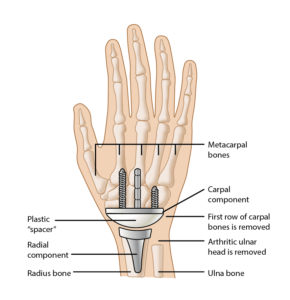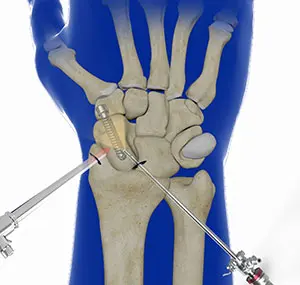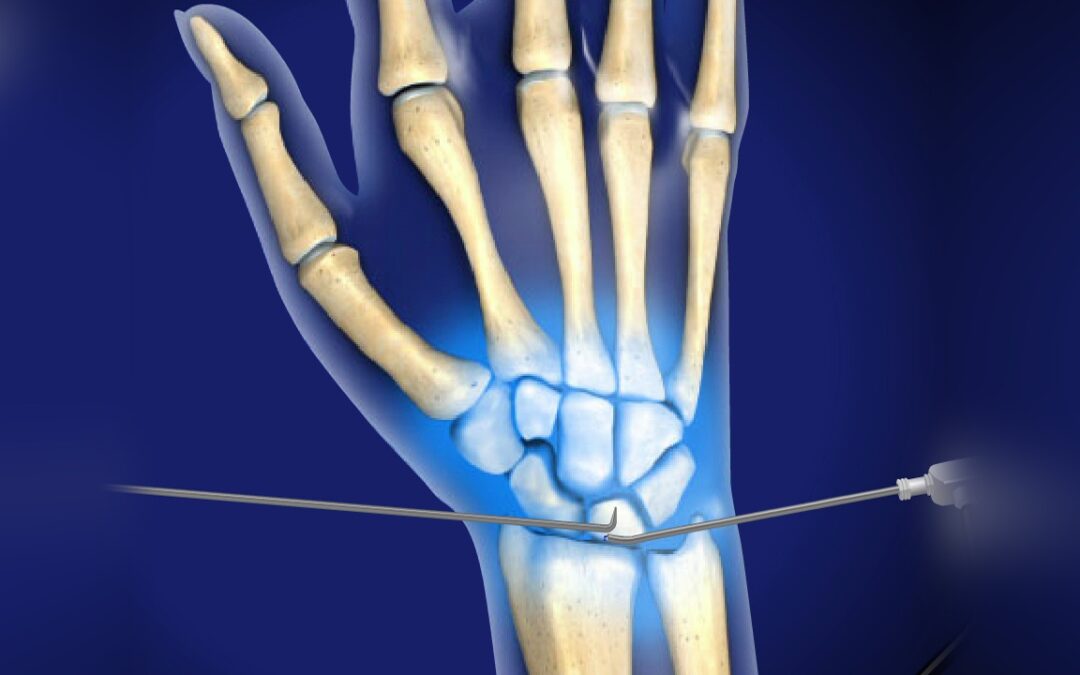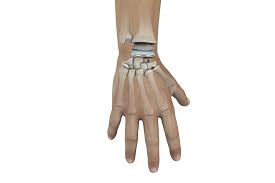Wrist Replacement
Wrist replacement, also known as wrist arthroplasty, is a surgical procedure to replace the damaged joint surfaces in the wrist with artificial implants. This is done to relieve pain and improve function in the wrist.

Wrist replacement surgery
Wrist replacement is usually performed for people who have severe arthritis in the wrist. Arthritis is a condition that causes inflammation and damage to the cartilage in the joints. When the cartilage in the wrist is damaged, it can cause pain, stiffness, and decreased range of motion.
In some cases, wrist replacement may also be performed for people who have had a previous wrist injury or surgery that has not healed properly.
There are two main types of wrist replacement: total wrist replacement and partial wrist replacement.
- Total wrist replacement is the most common type of wrist replacement. It involves replacing all of the joint surfaces in the wrist with artificial implants.
Total wrist replacement surgery
- Partial wrist replacement is a newer type of wrist replacement that only replaces the damaged joint surfaces in the wrist. This type of surgery is often used for people who have arthritis in only one part of the wrist.

Partial wrist replacement surgery

During wrist replacement surgery, the surgeon makes an incision in the wrist and removes the damaged cartilage and bone. The artificial implants are then inserted into the wrist and secured in place with screws or cement.
Wrist replacement is usually performed as an inpatient procedure. This means that you will need to stay in the hospital for a few days after surgery. You will need to wear a splint or cast for several weeks after surgery. You will also need to do physical therapy to regain range of motion and strength in your wrist.
The recovery time for wrist replacement is usually several months. Most people are able to return to their normal activities within a year.
Wrist replacement is a safe and effective procedure for relieving pain and improving function in the wrist. However, it is important to consider all of the risks and benefits of wrist replacement before deciding if it is the right treatment for you.
Here are some of the risks of wrist replacement:
- Pain: There may be some pain after surgery. This pain usually goes away with time and treatment.
- Stiffness: The wrist may be stiff after surgery. This stiffness usually improves with time and physical therapy.
- Weakness: The wrist may be weak after surgery. This weakness usually improves with time and physical therapy.
- Infection: There is a risk of infection after any surgery. The risk of infection is low for wrist replacement, but it is important to take steps to prevent infection, such as following your doctor’s instructions carefully.
- Nerve damage: There is a small risk of nerve damage during wrist replacement. This risk is usually low, but it is important to talk to your doctor about the risks of nerve damage before surgery.













